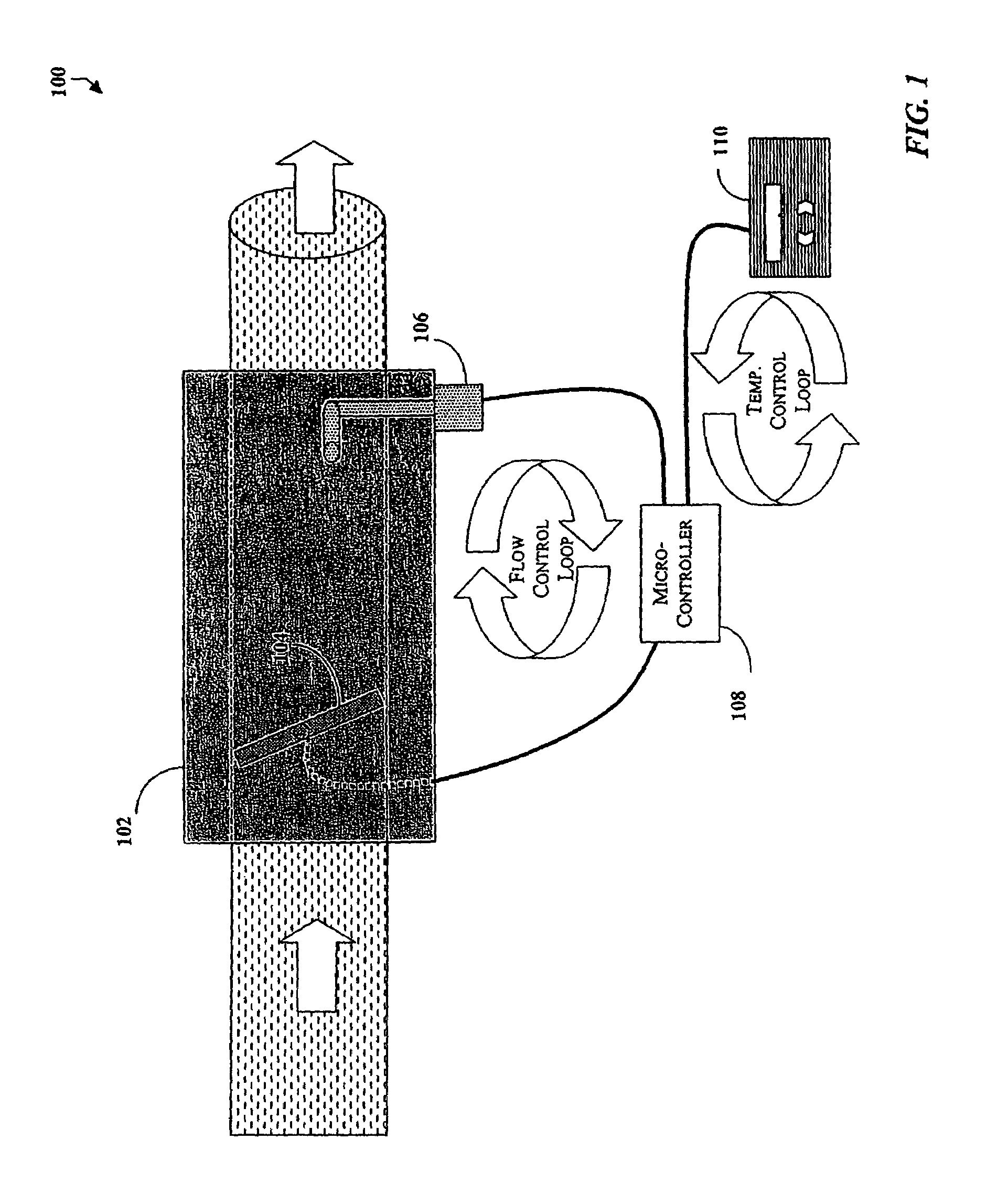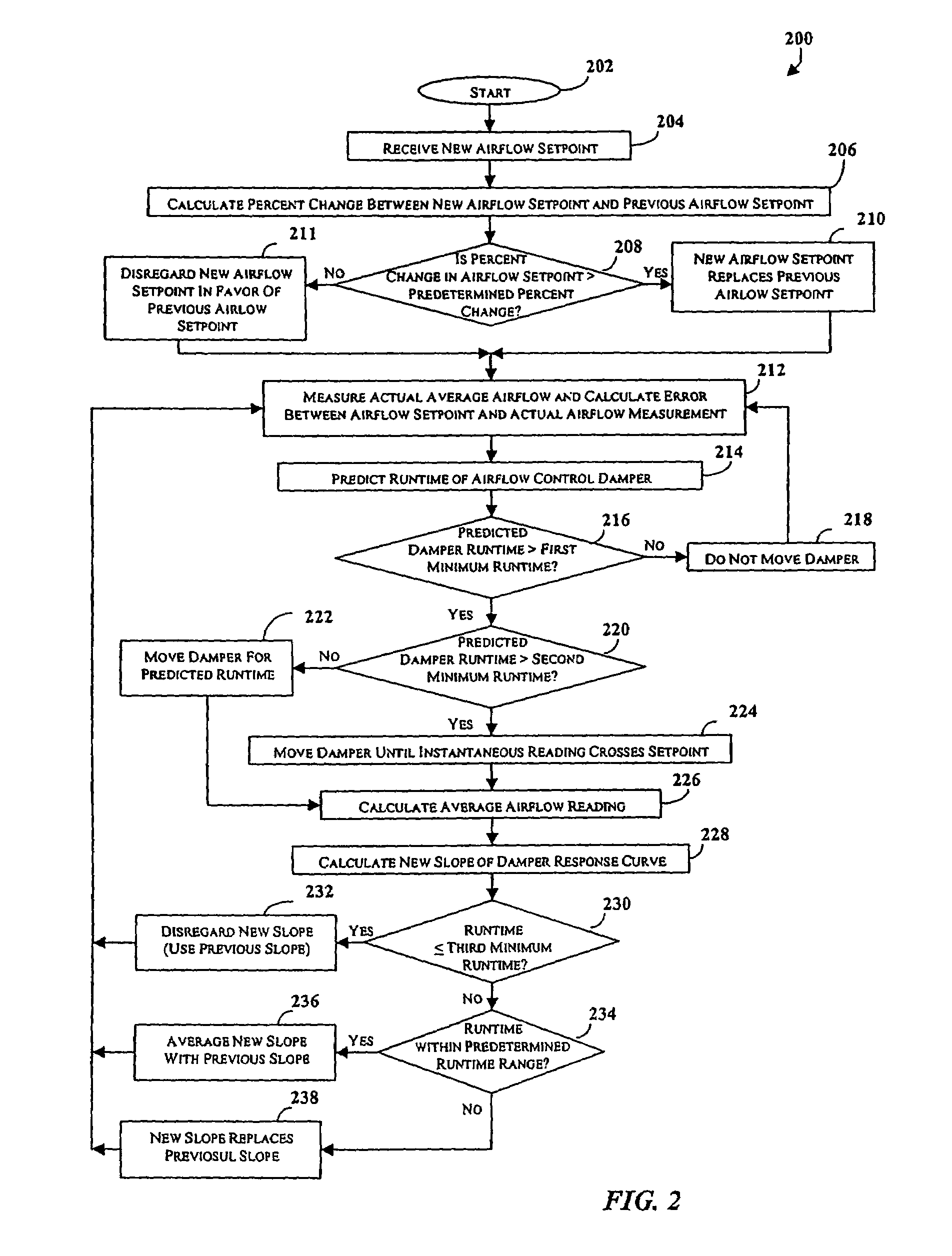Slope predictive control and digital PID control
a predictive control and digital technology, applied in ventilation systems, heating types, domestic cooling apparatuses, etc., can solve problems such as inefficiency of pressure-dependent vav control systems, airflow into other rooms affected, and temperature control loops to “fight"
- Summary
- Abstract
- Description
- Claims
- Application Information
AI Technical Summary
Benefits of technology
Problems solved by technology
Method used
Image
Examples
Embodiment Construction
[0021]In one embodiment, the present invention provides flow and temperature control loops to accomplish a Variable Air Volume (VAV) temperature control algorithm in a manner that addresses the problems encountered in the control of prior art pressure independent VAV control systems.
[0022]To address the problem of noisy instantaneous signals representing flow measurements, the present invention averages the instantaneous flow measurements over a period of time. The averaging technique serves to settle and eliminate a significant amount of the noise in the instantaneous flow measurement signals, and provides a better measurement of the average airflow into the room. Normally, when flow measurements are averaged over time, delay is introduced into the control loop. This delay causes the flow controls to overshoot the setpoint because by the time the averaging of the measurements is complete, the airflow control damper has moved past the desired position. The present invention avoids t...
PUM
 Login to View More
Login to View More Abstract
Description
Claims
Application Information
 Login to View More
Login to View More - R&D
- Intellectual Property
- Life Sciences
- Materials
- Tech Scout
- Unparalleled Data Quality
- Higher Quality Content
- 60% Fewer Hallucinations
Browse by: Latest US Patents, China's latest patents, Technical Efficacy Thesaurus, Application Domain, Technology Topic, Popular Technical Reports.
© 2025 PatSnap. All rights reserved.Legal|Privacy policy|Modern Slavery Act Transparency Statement|Sitemap|About US| Contact US: help@patsnap.com



